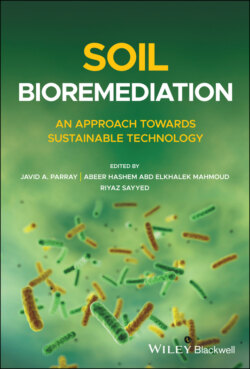Читать книгу Soil Bioremediation - Группа авторов - Страница 32
2.5.2 Phytovolatilization
ОглавлениеPhytovolatization is the process in which pollutants are up taken by the plants from the soil and then converted into a volatile form and then released in the atmosphere. Phytostabilization can be used for organic pollutants and other heavy metals like Se and Hg. But, as explained earlier, phytostabilization transfers the pollutants into the atmosphere, from one medium to another, and does not remove the pollutants permanently. The pollutants in the atmosphere can also be redeposited into the soil at a later time. In phytoremediation of organics, plant metabolism contributes to the contaminant reduction by transformation breakdown, stabilization, or volatilizing contaminant compounds from soil and groundwater. Phytodegradation is the breakdown of organics, taken up by the plant to simpler molecules that are incorporated into plant tissues. Plants contain enzymes that can breakdown and convert ammunition wastes, chlorinated solvents such as trichloroethylene, and other herbicides. The enzymes are usually dehalogenases, oxygenases, and reductases. Rhizodegradation is the breakdown of organics in the soil through microbial activity of the root zone and is a much slower process than phytodegradation. Yeast, fungi, bacteria, and other microorganisms consume and digest organic substances like fuels and solvents. All phytoremediation technologies are not exclusive and may be used concurrently, but the metal extraction depends on its bioavailable fraction in soil [117, 118].
